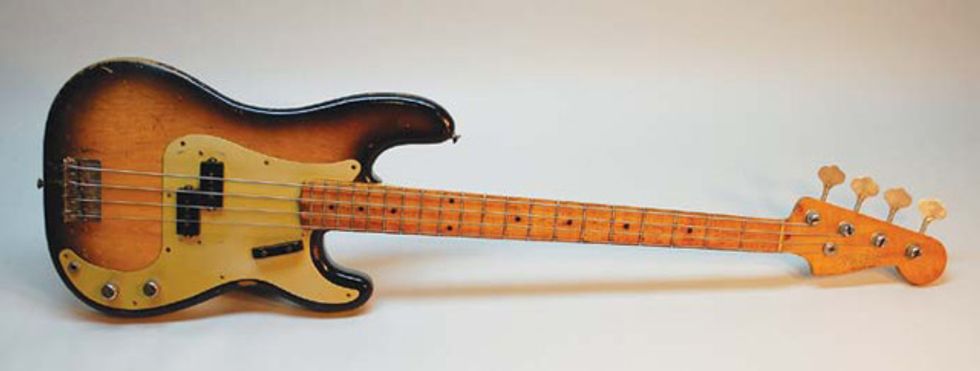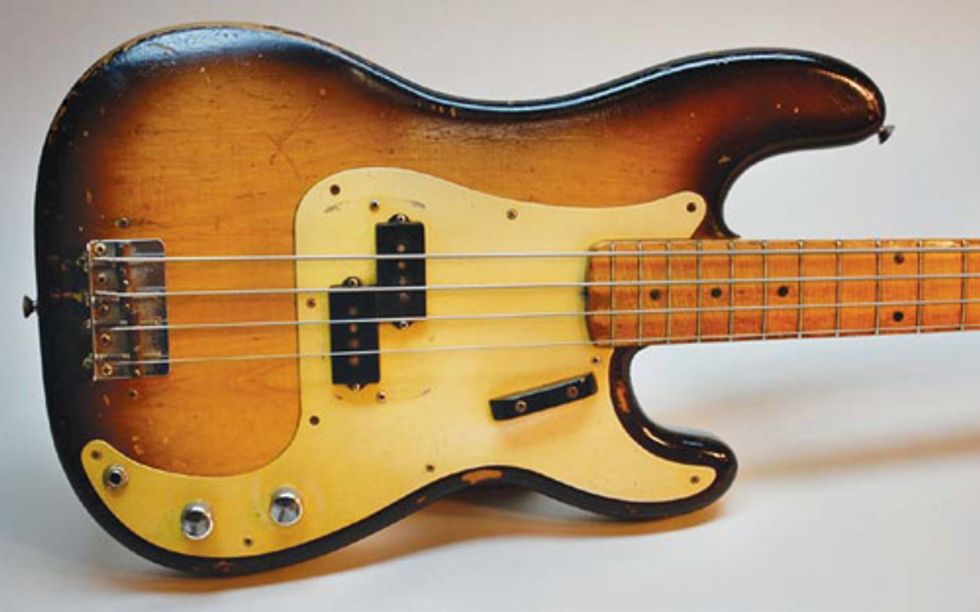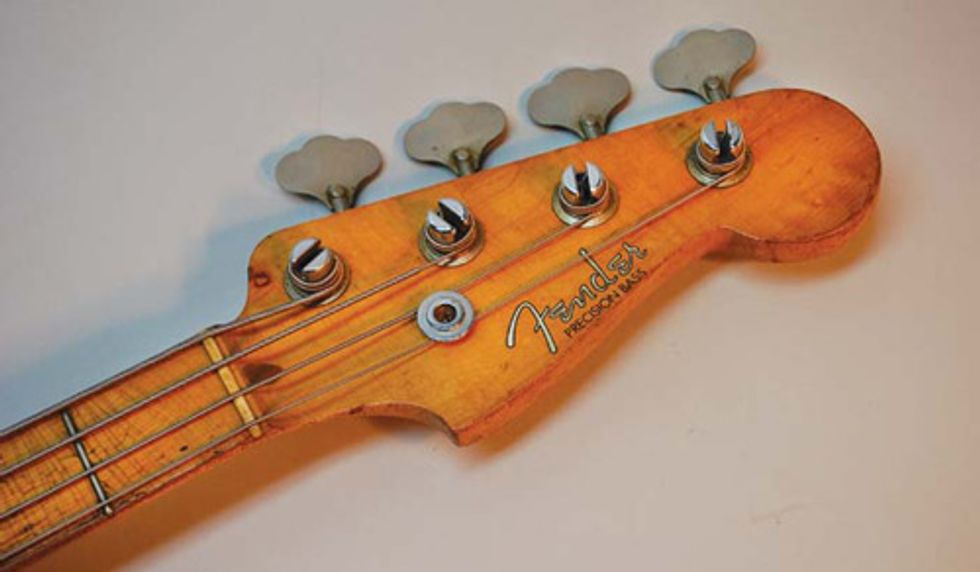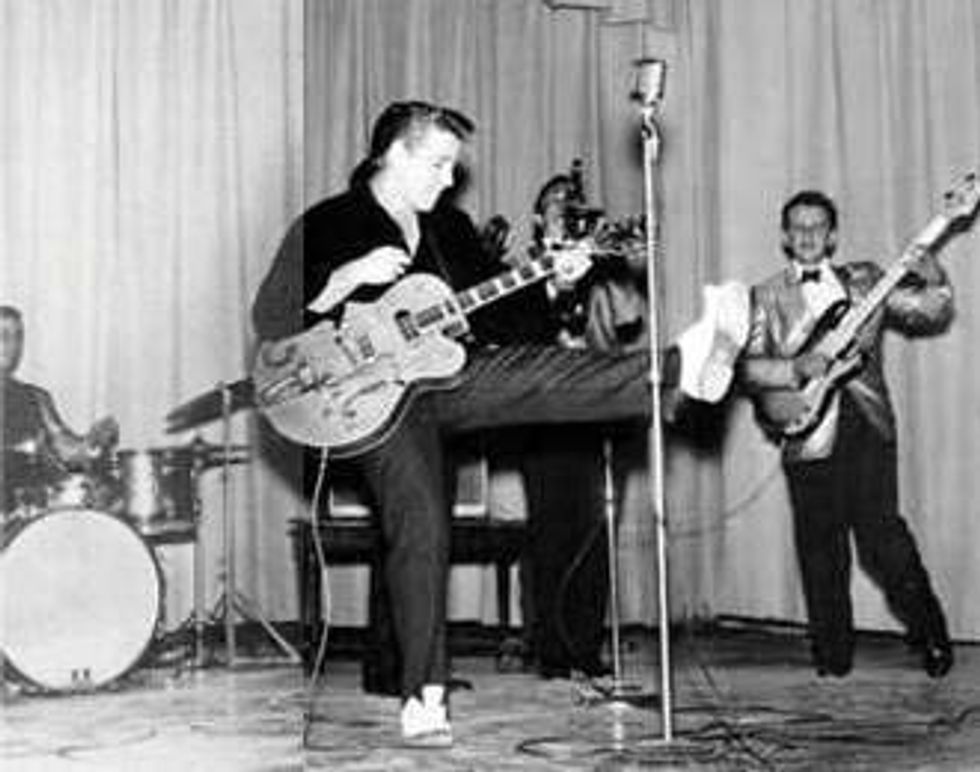Guitarists would revere Leo Fender
the world over if he’d only designed the
Stratocaster and Telecaster. But you could
make the case that popular music fans over
the last 60 years are as much indebted to
Leo for the Precision Bass. The P Bass is
the seminal electric solidbody bass, even
if companies like Rickenbacker has flirted
with the idea before Fender. Leo built the
first prototype in 1950 and full production
started a year later. The genius in Leo’s
design is evident not only in the P Bass longevity,
but in the wide spectrum of players
that have carved new musical paths with the
P Bass as a foundation—Motown Records’
James Jamerson, Carol Kaye, Black Sabbath’s
Geezer Butler, U2’s Adam Clayton, The
Who’s John Entwistle, Queen’s John Deacon,
Steely Dan’s Walter Becker, Flea, The Cure’s
Simon Gallup, Dee Dee Ramone, and Roger
Waters, to name just a few.

This particular 1958 P Bass is 100 percent original and is said to have been used onstage with Boxcar Willie’s band and by rockabilly legend Eddie Cochran’s bassist Connie ‘Guybo’ Smith [see inset photo]. 1958 was a year of transition for the P Bass. And many features and appointments were only seen together for one year because of the many alterations the P-bass saw between ’57 and’59. The contoured, second generation body has a two-tone sunburst finish that was discontinued in May 1958, while its one-piece maple neck and fingerboard was replaced in mid 1959 by a maple neck and rosewood fretboard combination. This instrument also sports the gold, anodized aluminum pickguard of mid ’57 to late ’59 and the P Bass’ signature split-coil pickup—a humbucking design that’s connected in series but magnetically inverted (N/S-S/N)—though in this case it uses raised-A pole pieces that were discontinued and made flush in 1959 production models.



This particular 1958 P Bass is 100 percent original and is said to have been used onstage with Boxcar Willie’s band and by rockabilly legend Eddie Cochran’s bassist Connie ‘Guybo’ Smith [see inset photo]. 1958 was a year of transition for the P Bass. And many features and appointments were only seen together for one year because of the many alterations the P-bass saw between ’57 and’59. The contoured, second generation body has a two-tone sunburst finish that was discontinued in May 1958, while its one-piece maple neck and fingerboard was replaced in mid 1959 by a maple neck and rosewood fretboard combination. This instrument also sports the gold, anodized aluminum pickguard of mid ’57 to late ’59 and the P Bass’ signature split-coil pickup—a humbucking design that’s connected in series but magnetically inverted (N/S-S/N)—though in this case it uses raised-A pole pieces that were discontinued and made flush in 1959 production models.










![Rig Rundown: AFI [2025]](https://www.premierguitar.com/media-library/youtube.jpg?id=62064741&width=1245&height=700&quality=70&coordinates=0%2C0%2C0%2C0)












 Shop Scott's Rig
Shop Scott's Rig


![Rig Rundown: Russian Circles’ Mike Sullivan [2025]](https://www.premierguitar.com/media-library/youtube.jpg?id=62303631&width=1245&height=700&quality=70&coordinates=0%2C0%2C0%2C0)












































